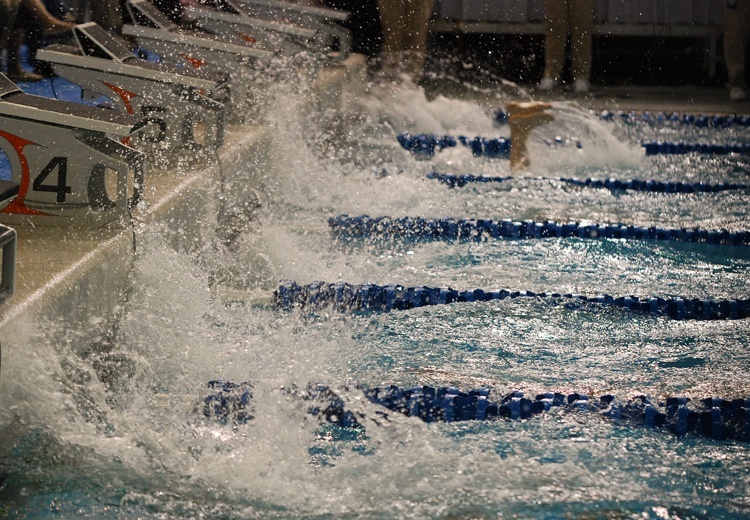Courtesy of Gary Hall Sr., 10-time World Record Holder, 3-time Olympian, 1976 Olympic Games US Flagbearer and The Race Club co-founder.
There are four parts to the freestyle flip turn: the approach, the tumble, the underwater and the breakout. Mistakes in all four parts are commonly made by most swimmers. Here are three of my favorite pearls for the approach to the wall that will help you improve your freestyle flip turns.
The Approach
- Accelerate to the wall. As swimmers approach the wall, most will slow their stroke rates or, even worse, glide into the wall. In either case, the swimmer will lose valuable momentum and time. Try to hold your stroke rate as you near the wall, increase your kicking speed and lengthen your neck on the final long stroke before tucking your head down for the flip. Avoid the short, choppy final stroke if you can. Carry that extra momentum through the turn.
 Look no higher than the bottom of the cross. To judge the distance to the wall properly, the swimmer must look at some part of the wall. Otherwise the risk is too great of missing the wall, either too close or too far away. Most swimmers look straight into the black cross on the end of the pool before making the flip, lifting their heads substantially and slowing themselves down. If you look only at the very bottom of the black cross to gain that perspective, rather than straight forward, the head lift is considerably less. This enables the swimmer to maintain more speed and momentum going into the flip.
Look no higher than the bottom of the cross. To judge the distance to the wall properly, the swimmer must look at some part of the wall. Otherwise the risk is too great of missing the wall, either too close or too far away. Most swimmers look straight into the black cross on the end of the pool before making the flip, lifting their heads substantially and slowing themselves down. If you look only at the very bottom of the black cross to gain that perspective, rather than straight forward, the head lift is considerably less. This enables the swimmer to maintain more speed and momentum going into the flip.- Don’t breathe while starting the flip. In sprints, it is advisable to not take a breath on the last stroke or two going into the turn. In the 200 or longer events, a swimmer needs all of the oxygen he or she can get. So taking a breath on the final stroke approaching the wall is typical. However, some swimmers will take the breath and initiate the tumble at the same time, causing them to lose their perspective of where the wall is. Even if the breath is taken on the final stroke, make sure the head is back down before initiating the flip.
Yours in swimming,
Gary Sr.

Gary Hall, Sr., Technical Director and Head Coach of The Race Club (courtesy of TRC)
Like The Race Club on Facebook
Follow The Race Club on Instagram
Follow The Race Club on Twitter
Connect to The Race Club / Gary Hall Sr. on Linkedin
[email protected]
See The Race Club HQ here.
THE RACE CLUB
Because Life is Worth Swimming, our mission is to promote swimming through sport, lifelong enjoyment, and good health benefits. Our objective is for each member of and each participant in The Race Club to improve his or her swimming performances, health, and self-esteem through our educational programs, services and creativity. We strive to help each member of The Race Club overcome challenges and reach his or her individual life goals.
The Race Club provides facilities, coaching, training, technical instruction, video, fitness and health programs for swimmers of all ages and abilities. Race Club swim camps are designed and tailored to satisfy each swimmer’s needs, whether one is trying to reach the Olympic Games or simply improve one’s fitness. Our programs are suitable for beginner swimmers, pleasure swimmers, fitness swimmers, USA swimming or YMCA swimmers, or triathletes; anyone who wants to improve swimming skills. All of our Race Club members share an enjoyment of being in the water and use swimming to stimulate a more active mind and body.
Courtesy of The Race Club, a SwimSwam partner.


